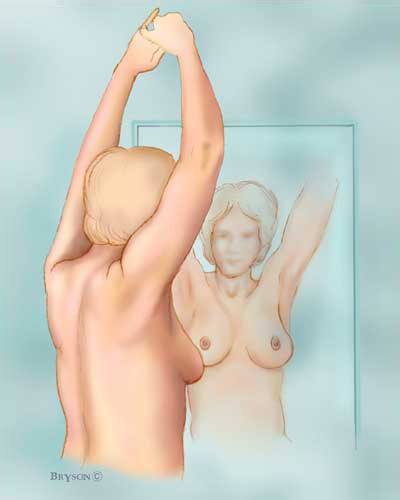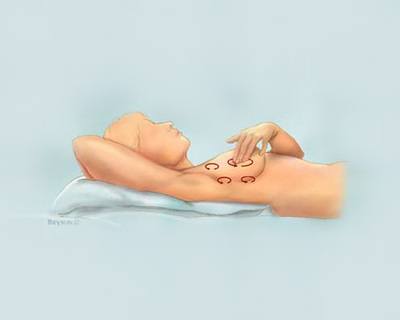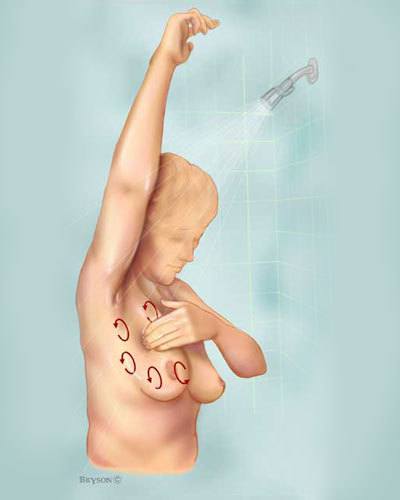Among all the cancers, breast cancer is the one that we can spot early by ourselves. And breast self-exam is an effective way to do so. The American Cancer Society has advised women to conduct breast self-exams as an optional screening tool.
The Step-by-Step Procedure for the Breast Self-Exam
Use the following five steps for self-examination of your breasts.
Step 1: Stand in front of the mirror with your arms on your hips and your shoulders straight. Check the appearance of the breasts. Are they their usual size, shape, and color? Are they evenly shaped or do they have any visible distortion or swelling? Look out for dimpling, puckering, or bulging of the skin. Have either of the nipples changed position or become inverted (pushed inward instead of sticking out)? Is there any soreness, rashes, redness, or swelling? If you see any of the above-mentioned symptoms, bring them to your doctor’s attention. Step 2: Raise your arms, hold them above the head and look for the same changes mentioned in step 1. Step 3: See if there is any sign of watery, milky, or yellow fluid or even blood leaking from one or both of the nipples.
Step 4: Lie down on your bed and feel your breasts while keeping the fingers flat and together, checking for unusual bumps or lumps. Use your right hand to feel your left breast and vice versa. Your touch must be firm and smooth using the first few fingers of your hand. The entire breast from top to bottom and side to side must be examined; from the armpit to the cleavage and from the collarbone to the top of your abdomen.
Step 5: Sit up or stand and examine your breasts once more as mentioned in step 4. You may find this easier to do when your skin is wet and slippery, maybe while taking a shower. Use the same hand movements and examine your entire breasts. Notes You can journal or keep a record of your breast examinations with notes on what you observed and where you felt lumps or irregularities. Lumps may appear and disappear for some people as their body changes with the menstrual cycle. If the changes last beyond a full menstrual cycle or if they seem to get bigger or more prominent in some way, it’s wise to consult your doctor for advice.
Conclusion
Though a women’s risk of breast cancer doubles if she has a first degree relative (mother or sister) with the same disease, only less than 15% of women with breast cancer have a relative diagnosed with it. The remaining 85% occurs in women without any family history of breast cancer. This is believed to be because of genetic mutations that result from aging rather than inherited mutations. You probably have no desire to do a breast self-exam, and many women find this a very frustrating experience as it is not easy to make sense of the findings. But don’t worry too much; the more you examine your breasts, the more familiar you become with them and it becomes much easier to spot an unusual occurrence.


